A rustle in the undergrowth accompanied by a huffy “tik-tik” sound means my walk is being watched. A tiny figure flutters in the low branches ahead, barely seen but heard. Making me aware that my presence is unwelcome, ushering me on my way. How a bird so small can be intimidating is beyond me, and yet I increase the pace of my walk to escape the “tik-tik” tirade. As I glance over my shoulder, the bully in the bushes makes a brief appearance on an outlying branch, tail cocked before disappearing back into the safety of the shadows. It’s the unmistakable outline of the wren.
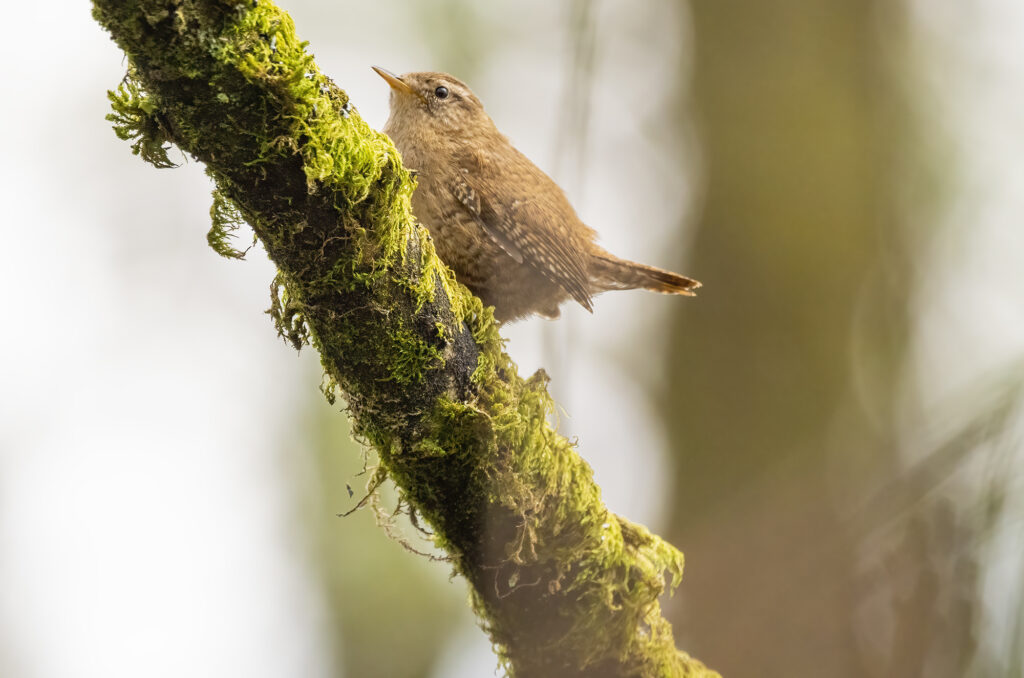
Often mistaken for the UK’s smallest bird (a title held by the goldcrest), wrens are easy to identify from their compact bodies, short wings, and slightly curved bills. But the most notable feature of the wren’s appearance is a short, narrow, upright tail, giving this species its sprightly and alert demeanour.
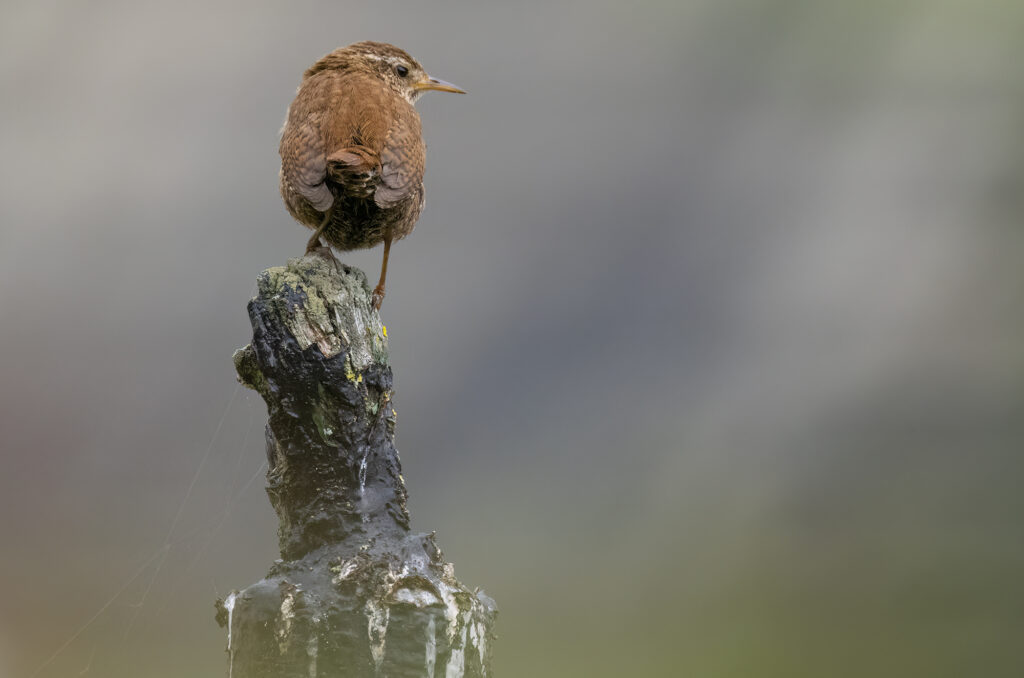
The wren’s plumage is less distinctive but is quite pretty if you get a closer look – an attractive chestnut brown shade with subtle variations, including a mix of lighter and darker brown streaks that offer excellent camouflage among the underbrush.
Tiny bird, big personality
It can be tricky to get a good view of a wren, as they spend a lot of time in dense vegetation hunting for invertebrates. They seem to move constantly and, when they do come out of cover, they are often found flitting about near to the ground in the shadows. I’ve found that it’s worth taking up a position where you can watch and wait for them to be close enough to capture images, particularly as they are often in low-light conditions where getting sharp shots can be trickier.
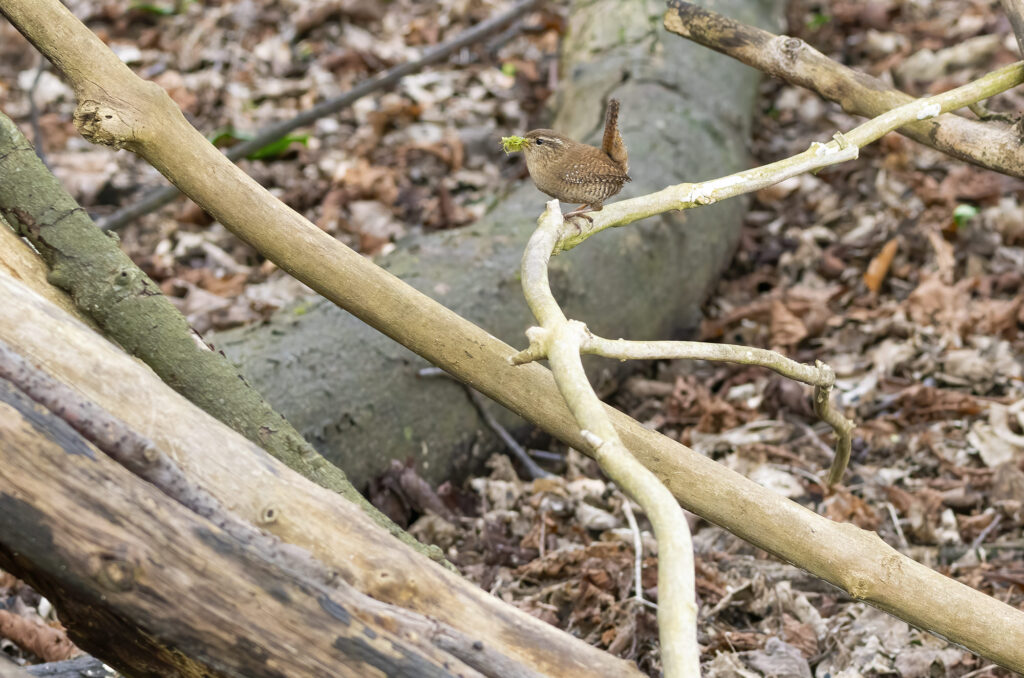
As well as being highly active when seeking food, wrens spend a lot of energy defending their territory from intruders. On a walk a few years ago, I noticed something moving on the ground and thought it was two mice having a scrap. On closer inspection, it was two wrens locked together in battle by their beaks and feet. They appeared to be trying to kill each other. So much so, that they didn’t notice my partner and me standing next to them. They continued to fight so violently that they rolled off the path and onto a verge, which allowed us to continue our walk without knowing who won the bout. I cursed myself at not having my camera with me.
Tiny bird, big voice
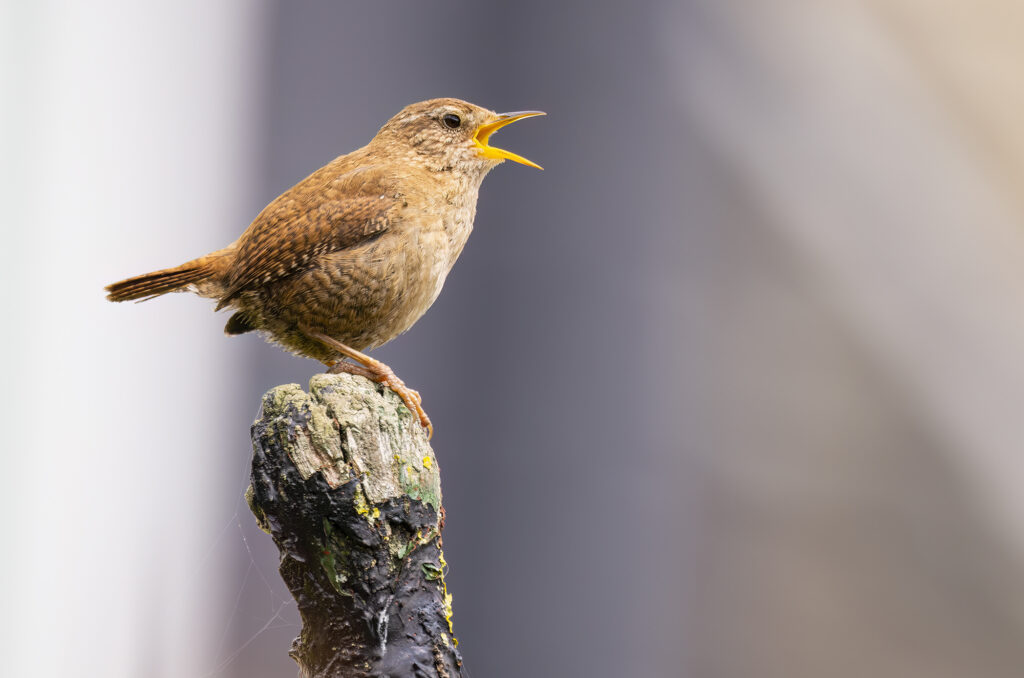
One of the most remarkable aspects of the wren is its song. Despite their tiny stature, wrens have a powerful voice that is easily recognised. Their song is a bubbling succession of trills and whistles followed by rapid notes, which can make them sound like a machine gun. They also use that agitated “tik-tik” sound mentioned above and other calls to communicate while in dense habitats.
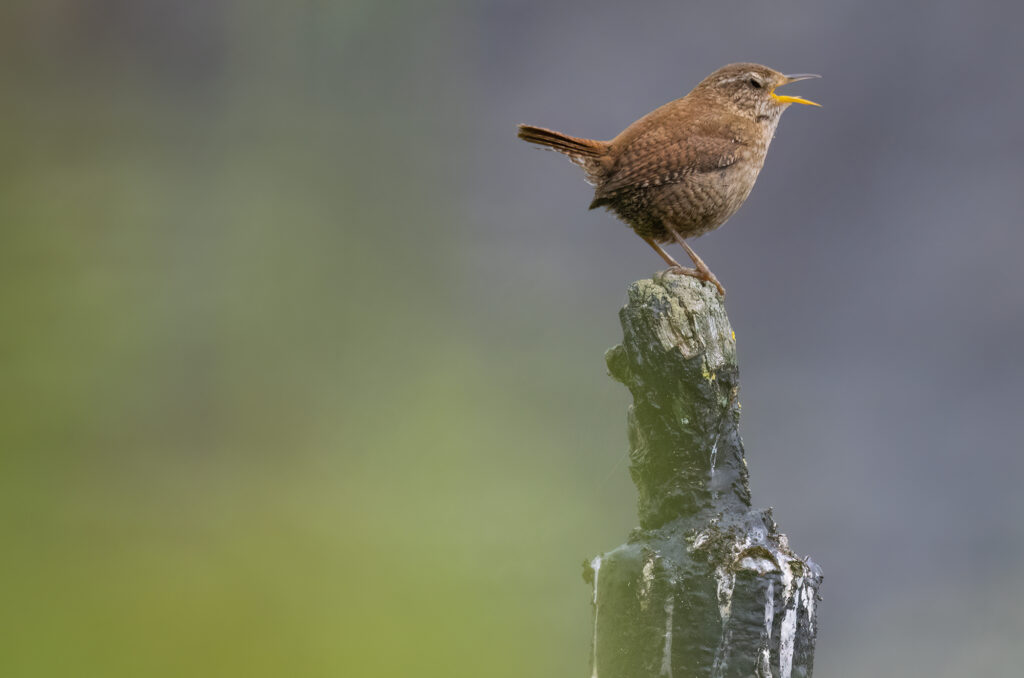
While you will often hear a wren singing from dense cover without seeing it, I captured the footage and images shown in the video below when I spotted this individual singing from a high perch on top of a post. It was a bright day and the bird’s view of me was obscured by a hedge, so I could approach slowly and get quite close. It was fascinating to watch the bird belt out its song and then wait for a response from a nearby tree. If you watch and listen closely, you can hear the response and see the wren’s reaction. This ‘song matching’ allows a wren to respond to threats from its own kind and communicate that it is ready to defend its territory. By listening to the response, it can get an idea of the potential fitness of the rival. By singing from an elevated position on the top of the post, this bird projected its song over a larger area, making it easier for potential intruders and mates to hear. Singing from a high perch, such as this, also enables a clear visual display of the bird’s presence and dominance.
Tiny bird, big subject
When photographing wrens, it is worth taking the time to wait for them to come out of the shadows and into the spotlight to show the full range of their behaviour – the lover, the fighter and, of course, the singer.
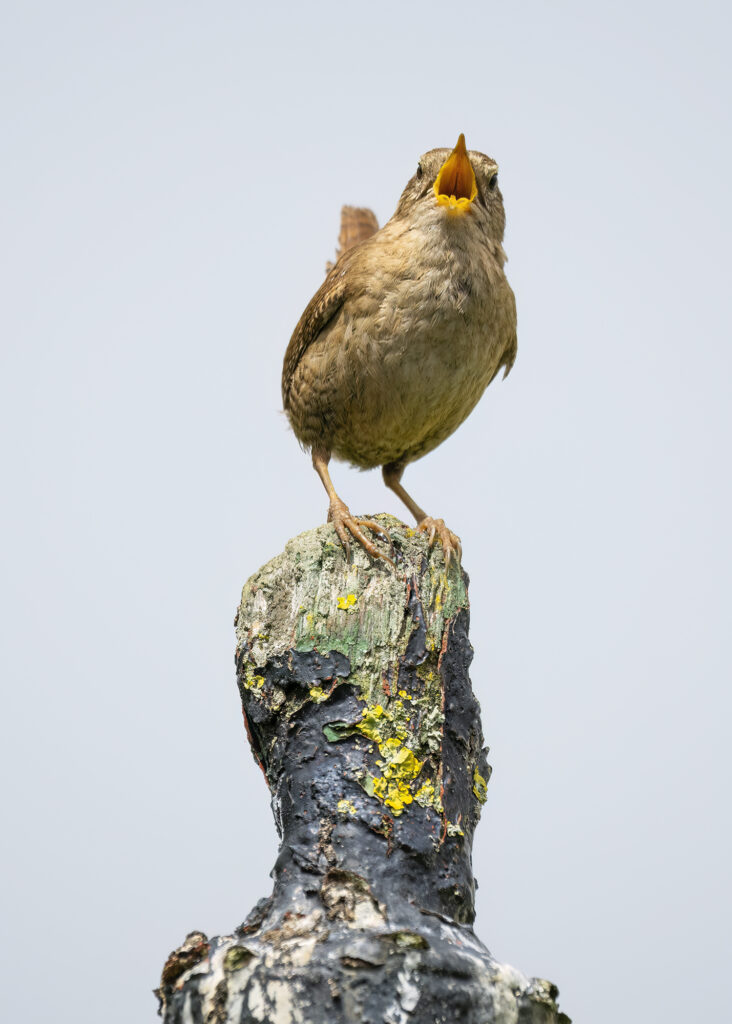


1 comment
We have a resident wren who sits on the gate by the back door, I was playing your video and he/she responded!
Comments are closed.